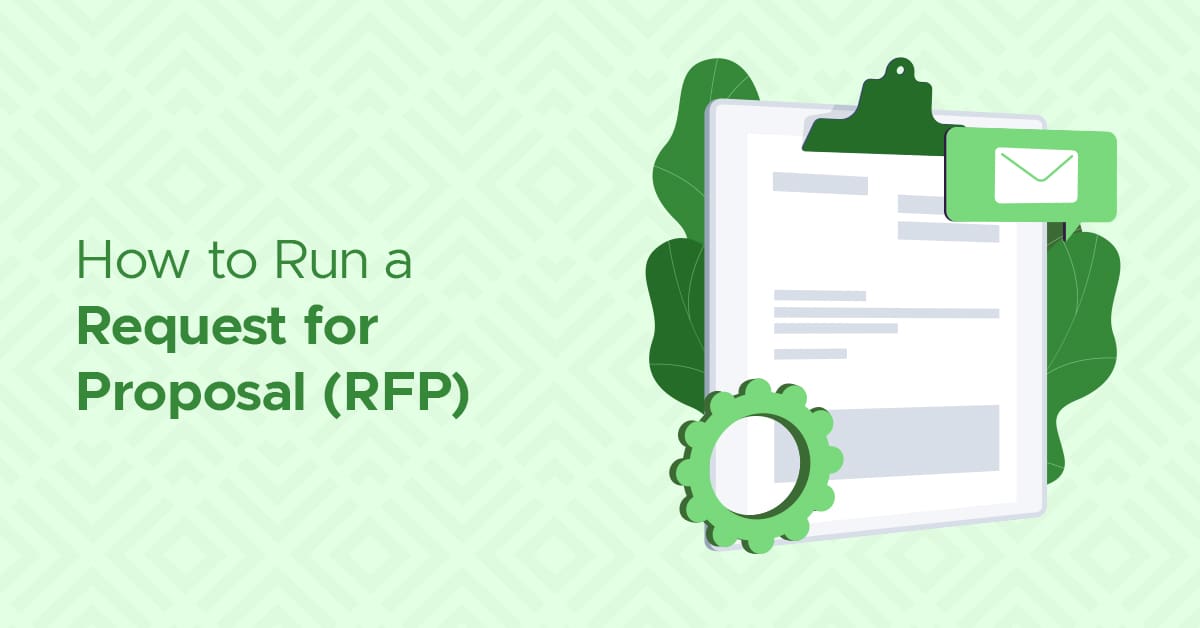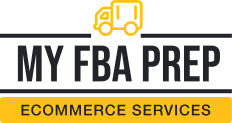
Issue 115: How to Run an RFP (+ risks of switching 3PLs)

Hello, MyFBAPrep Sellers!
We’re deep in Q3, which means it’s almost Q4! And if you’re going to switch 3PLs, it needs to be now or next year.
In this newsletter, you’ll learn about the risks of switching 3PLs, steps to make the switch, and how to run a request for proposal process (RFP) to vet new 3PLs.
We’re also throwing in some channel diversification tips so you can take full advantage of Q4 sales across sales channels.
A Guide to The RFP Process: Steps for a Successful 3PL Search
A request for proposal (RFP) is a questionnaire-style document that brands and merchants send to potential vendors to prepare to buy a product or service. It allows you to gather a wealth of vendor data in a standardized manner for easy comparison so you can make the best decision to fulfill your business’s unique needs and goals.
Running a formal RFP process helps ensure you receive higher-quality bids with more innovative proposals, which ultimately translates to improved outcomes and maximized ROI. It also puts you in a position to boost your bargaining power, as you can better negotiate with potential vendors when you have a breadth of competitive information to arm yourself.
Here are the basics of what the process looks like:
- Identify key stakeholders
- Conduct research
- Define the scope and specifications
- Determine evaluation criteria and processes
- Write the RFP document
- Select potential vendors
- Distribute the RFP and provide support
- Evaluate responses
- Negotiate and implement the contract
- Notify unsuccessful vendors
- Debrief your team
Each phase has their own detailed set of steps. For example, when writing the RFP document, you need to include:
- Executive summary
- Project goals and objectives
- Scope of work
- Minimum requirements
- Questions
- Terms and conditions
- Pricing
- Deadlines
- Submission process
- Evaluation criteria
We’d say more, but it would take up more than one newsletter and we’re also excited about the other articles we have to share with you today!
Read our full 5000+ word guide to running an RFP on the MyFBAPrep blog.
Risks of Switching Your eCommerce Logistics Setup
Here are some of the most frequent eCommerce logistic shifts businesses make, along with the potential challenges involved:
- Moving from in-house to outsourced: This is a popular jump for businesses looking to scale or streamline operations. However, it takes time to find the right 3PL partner, and ensuring smooth inventory handover and integration is a significant obstacle during the transition.
- Switching 3PLs: Maybe your current provider is no longer the perfect fit. While a new partner can boost efficiency, navigating complex contract terminations, data migration between systems, and potential fulfillment disruptions require careful planning.
- Integrating FBA prep: Amazon’s fulfillment network is tempting due to its extensive reach and hands-off approach, but integrating FBA prep into your existing workflow can be difficult. We’ve seen many brands try to force their manufacturers or current 3PLs into doing FBA prep for their Amazon sales, and then have to contend with mistakes and oversights from relying on providers that don’t have FBA as a core skill.
Altering your logistics in eCommerce is a complex endeavor that comes with inherent risks. However, you can overcome these challenges with strategic planning and a thorough risk assessment.
Researching specialized partners, particularly for FBA prep, and not overloading your current supply chain are also critical steps in this process.
As you consider switching your fulfillment setup, evaluate your current operations and the long-term benefits of contracting with specialized partners. A strategic adjustment can enhance efficiency, compliance, and customer satisfaction, all of which support your eCommerce business’s continued success.
Learn where we’ve seen many merchants stumble during their previous 3PL switches.
A practical guide to switching 3PLs
In this guide, we’ll:
- Uncover the top scenarios jumping ship from one 3PL to the next makes sense.
- Explore the fulfillment choices available and how to set the stage for success.
- Reveal some things to watch out for along the way to help your business stay on track.
Read the Guide to Switching 3PLs
Channel Diversification: Diving Into DTC and Other Marketplaces
In the age of online shopping and social media, where customers can encounter your brand in countless ways, ensuring brand control and consistency is critical. Channel diversification and maintaining a cohesive brand message across all platforms builds trust, recognition, and, ultimately, success.
Our interview with James Thomson, managing partner of Equity Value Advisors, revealed invaluable advice for this challenge, drawing on his extensive experience in the eCommerce space.
Start diversifying your sales channels before Q4.
Multichannel eCommerce Strategy: Mastering a Multi-Platform World
Sustainable growth and resilience in eCommerce all but require a multichannel strategy. But with multiple platforms vying for merchants’ attention, mastering a multichannel eCommerce strategy is no simple task.
This article draws insights from our interviews with industry veterans Scott Needham and James Thomson to outline the keys to a successful multichannel eCommerce strategy.
Master online sales, even with countless eCommerce platforms.
Top Industry News
The 5 Biggest Challenges Sellers Face When Using Amazon FBA (Forbes)
Fulfillment by Amazon (FBA) is a game changer for Amazon sellers who don’t want to manage their own shipping and returns. The service allows merchants to send their inventory to Amazon, which then handles warehousing, pick and pack, shipping and even reverse logistics when needed. Although it’s easy to use, the program isn’t free of issues, and after working with countless brands and 3P sellers, I’ve noticed some common patterns and problems. This article will go over the biggest challenges sellers face with FBA and how to mitigate them.
2024 Holiday Peak Fulfillment Fees for Fulfillment by Amazon (Amazon Central)
The 2024 holiday peak fulfillment fee will apply to all products. The fee amount will be the same for all items within a specific size-band for each store and will apply to US Fulfillment by Amazon (FBA), Canada FBA, North America Remote Fulfillment, US Multi-Channel Fulfillment, and Buy with Prime. The average holiday peak fulfillment fee will remain the same as last year, except for products priced under USD 10 in US FBA for which the peak fee is new in 2024. Amazon’s average FBA fulfillment fees continue to be 70% less expensive than comparable two-day shipping methods offered by other major third-party logistics providers.
E-commerce, Amazon Demand Drive Cargojet Volume Growth (FreightWaves)
Cargojet, the largest all-cargo airline in Canada, said core transportation revenue increased 11.5% in the second quarter from the prior year as the company taps into the booming international e-commerce logistics sector. Growth in e-commerce was the primary factor behind Cargojet’s improved earnings and positive outlook for the second half of the year.
E-commerce Is the Real Star of Walmart’s Earnings (24/7)
Among the keys to Walmart’s e-commerce business is that it saves customers time. They can order what they need online, drive to a special spot at a Walmart store, and have their entire order within minutes. This contrasts with ordering online for merchandise shipped to homes, which can take two to five days.
Shopify and Pivotree Partner for eCommerce Solutions (Retail Insight Network)
Ecommerce marketplace Shopify has entered a strategic partnership with frictionless commerce solutions and services provider Pivotree. The partnership will combine Shopify’s enterprise commerce platform with Pivotree’s expertise in architecting advanced digital solutions. Pivotree acts as a technology partner, focusing on executing and migrating enterprise commerce clients to the Shopify platform.
Online Grocery Sales Hit $7.9B in July as Delivery Powers Ahead (Grocery Dive)
The number of delivery orders recorded last month was almost 20% higher than the figure for July 2023, as both order frequency and the number of shoppers who opted for the fulfillment method increased, Brick Meets Click found. At the same time, pickup order volume was off by 3% as the channel’s monthly active user base and order frequency lost momentum.
ShipHero Spins Off Fulfillment Business (FreightWaves)
New York-based e-commerce software and fulfillment provider ShipHero announced Tuesday morning it is splitting off its fulfillment business into a 3PL subsidiary, named LVK, to better serve customers. Launching LVK as a separate entity while retaining the experience it has earned in the almost five years ShipHero’s fulfillment service has been in operation could allow for better future-proofing and more personalized customer service.
Until next time,
Rachel Andrea Go
Marketing Director, MyFBAPrep
